There are few world class number nines in football. With the rise of goalscoring wide players, the typical number nine has become a rarer sight. Even Karim Benzema, the favourite for this year’s Ballon d’Or, had to selflessly sacrifice his own goal tally to facilitate the incredible goalscoring of Cristiano Ronaldo before the Portuguese left Real Madrid in 2018. Only now are we seeing the almost unparalleled level of end product Benzema was perhaps capable of delivering all along.
The Frenchman is widely considered the world’s premier striker after a superb season saw him inspire Real Madrid to the Champions League and the La Liga title, scoring 42 times in 44 appearances across the two competitions. But there are two other strikers who could compete for his ‘world’s best number nine’ crown.
Unfortunately for German football, it seems both of them are on the verge of leaving the Bundesliga. Erling Haaland has already agreed a deal to join Manchester City from Borussia Dortmund and Robert Lewandowski, heavily linked with Barcelona, told a press conference this week that his “era at Bayern Munich is over” before calling a transfer the “best solution” for all parties.
And a surprise name has emerged as the replacement both clubs seem to want to take the reins from the two men who have dominated the Bundesliga. Over the last three seasons, Lewandowski has scored 110 goals in 93 Bundesliga matches, while Haaland has scored 62 Bundesliga goals in his 67 appearances in the league. They have a combined 56 Champions League goals in the same period.
So why are both Bayern Munich and Borussia Dortmund reportedly determined to sign a 24-year-old with six Bundesliga goals last season and zero appearances in European competitions in his career to date? Why do they both want to sign Saša Kalajdžić, an unused substitute for Austria in Ralf Rangnick’s first game in charge last week?
In fairness, Kalajdžić did score his six goals last campaign in just 13 appearances and for a Stuttgart side that escaped relegation on the final weekend of the season. Other than that, the answer is two-fold: his record stands up to further scrutiny, and he isn’t the only forward either club will sign to mitigate the loss of a star striker.
Firstly, looking at strikers with 20 or more Bundesliga goals since Haaland arrived in the league in January 2020, Kalajdžić stands out as the only realistic signing and by no means a bad one.
In that period, 18 players have 20 or more non-penalty Bundesliga goals and only five of them have scored at a rate better than the Austrian’s return of a goal every 152.7 minutes. And none of them are available. Lewandowski and Haaland obviously lead the way with their otherworldly consistency, and they’re followed by Patrik Schick, André Silva and Anthony Modeste.
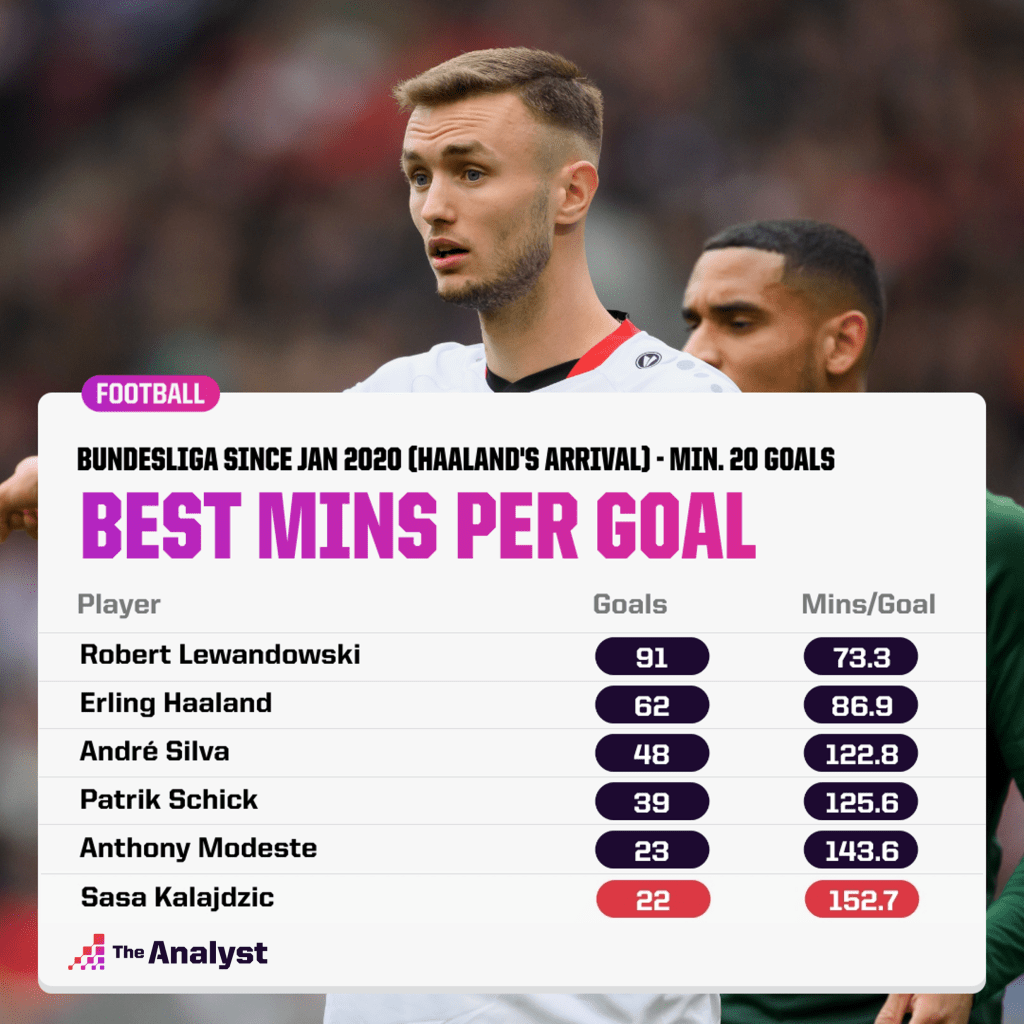
Schick is the most rounded of the three and sticks out as an obvious target for the league’s top two clubs after outscoring Haaland in the league in 2021-22 but he signed a new deal with Bayer Leverkusen, who finished third, just last week.
Likewise, Silva is also already at a Champions League club, having signed for RB Leipzig last summer. He failed to replicate the form shown at Eintracht Frankfurt in his first season further east. The Portuguese scored just eight non-penalty goals across the entire league season. Worse than that, he’s arguably the most one-dimensional player on this list, boasting (or whatever the opposite of that is) the worst dribble success rate of any of these players and contributing little outside of his goalscoring.
And Modeste, who is already 34, is the only player here who creates chances for his team-mates less often than Silva does, on top of having the fewest completed dribbles (0.3 per 90) and touches (28.6 per 90) of these options.
So if you cannot find someone to replicate the goal output of one of the world’s best strikers, what option do you have but to find someone who can replace some of it while adding other things? This is where Kalajdžić begins to stand out.
And let’s be clear: he can score goals as well. Still only 24, he netted 16 as well as five assists for a newly promoted Stuttgart side in 2020-21. They finished ninth that season but struggled amid an injury crisis in the season just gone, with Kalajdžić one of the key players to miss a lot of the campaign. Despite that, he returned to score six in 13 for a team that finished the campaign in 15th, narrowly escaping relegation.
Standing at 6-foot-6, it should be no surprise that Kalajdžić is prolific in the air — half of his Bundesliga goals have been headers — but he does not just have his height to thank for that output. The Austrian has converted an unbelievable 26.8% of his headers in the league (excluding blocks), the best of any player on the aforementioned list of prolific strikers since Haaland’s arrival. Those headers have been varied, with some looping over the goalkeeper and others powered home, but the striker’s movement is consistent, peeling off the shoulder of his marker at the back post before darting across of him and attacking the ball at pace. When the ball goes wide, it’s that sharp movement that gets Kalajdžić chances whether the cross comes in low or high.
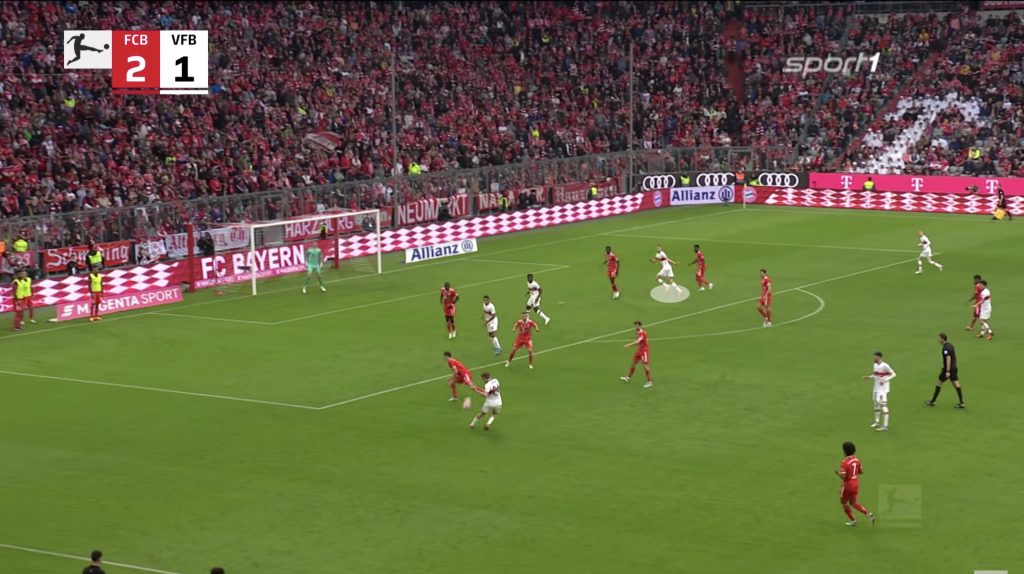
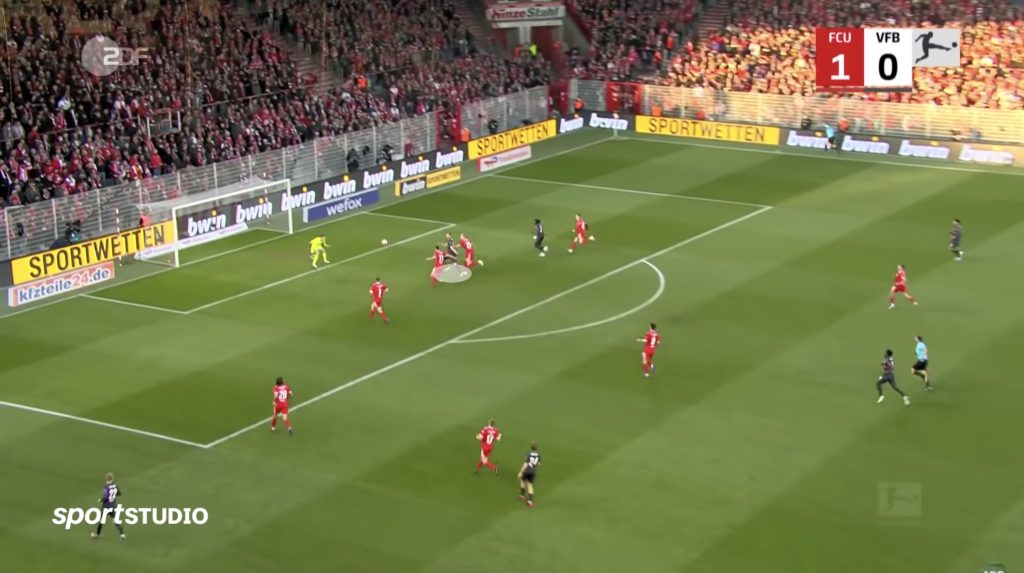
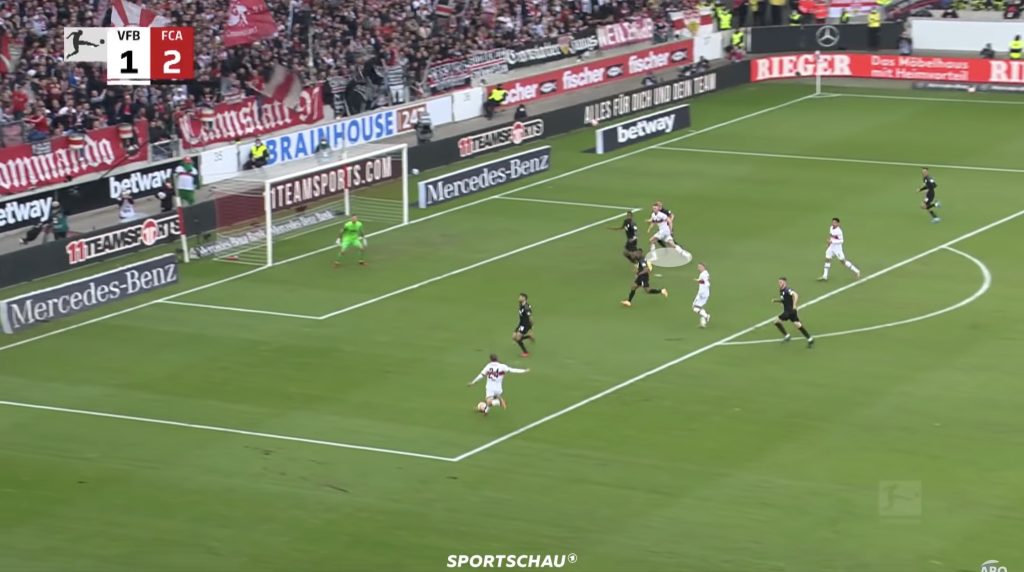
That sharp movement makes him a huge threat any time the ball goes into the box. A look at the passes that Kalajdžić receives before shooting shows us how threatening he is when the ball is delivered from wide.
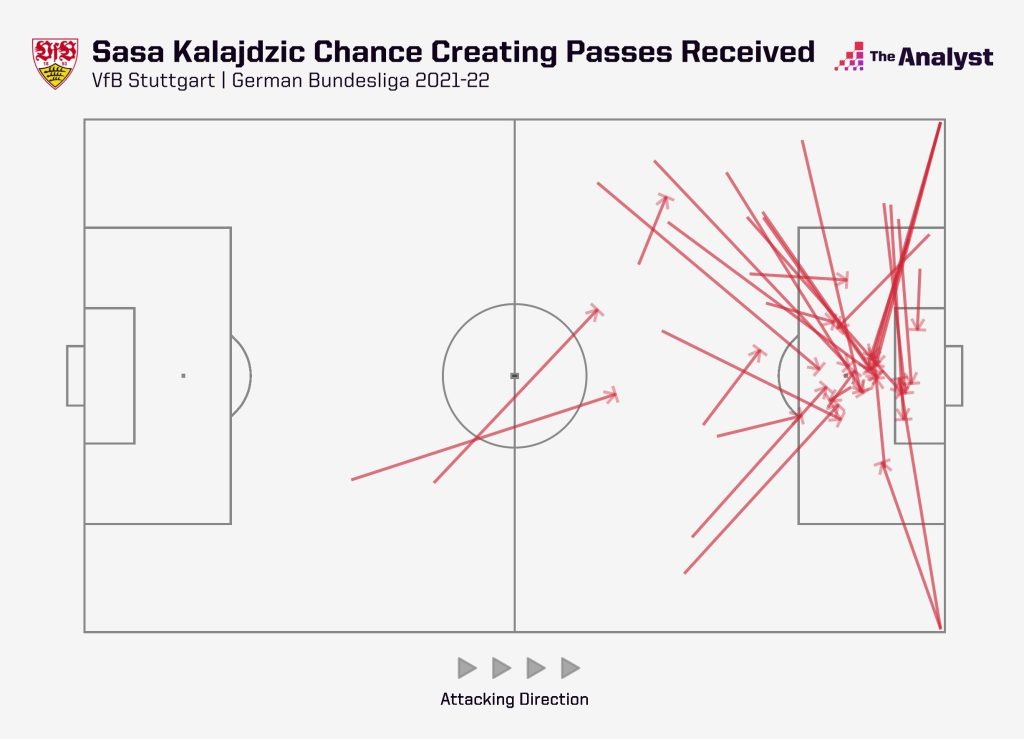
His movement is sharp when he has more space as well. The striker may not be the quickest but he looks to get in behind whenever possible and his runs on the break are intelligent, checking his runs to drop into space or driving on to either collect the ball beyond the last man or open space behind him for an onrushing team-mate.
Still, that won’t be enough to make up for the goals scored by Lewandowski or Haaland. Which is why it’s so important that there’s more to the Austrian’s game.
“I’m not really a classic target man, not really someone who hangs around the box,” Kalajdžić told the Bundesliga website in 2020.
“I played in midfield a lot when I was younger. I try to be a modern striker, despite my height. I think I do that well with my ability and the way I play.
“I’m not a classic number nine, maybe something between a nine and a 10.”
Though he has only been playing for Stuttgart, Kalajdžić’s 42.5 touches per 90 minutes has been more than his contemporaries and he doesn’t waste them, creating more chances (1.30 per 90 than Lewandowski (1.2) or Haaland (1.0) or indeed Schick (1.1) have managed over the last two seasons despite a more modest collection of team-mates.
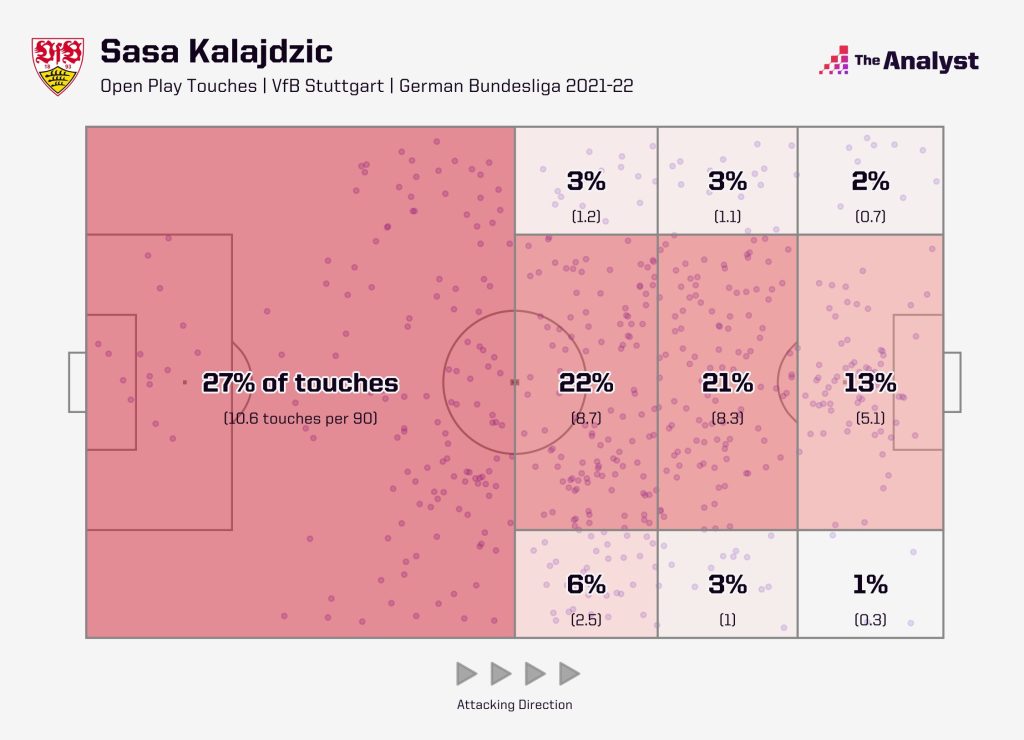
A look at his touch map from last season shows why. Of all the strikers listed earlier, Kalajdžić has the most touches but the fewest in the penalty area, and compared to the touch maps of Lewandowski and Haaland below, we can see drops far deeper than the other two to build and link play.
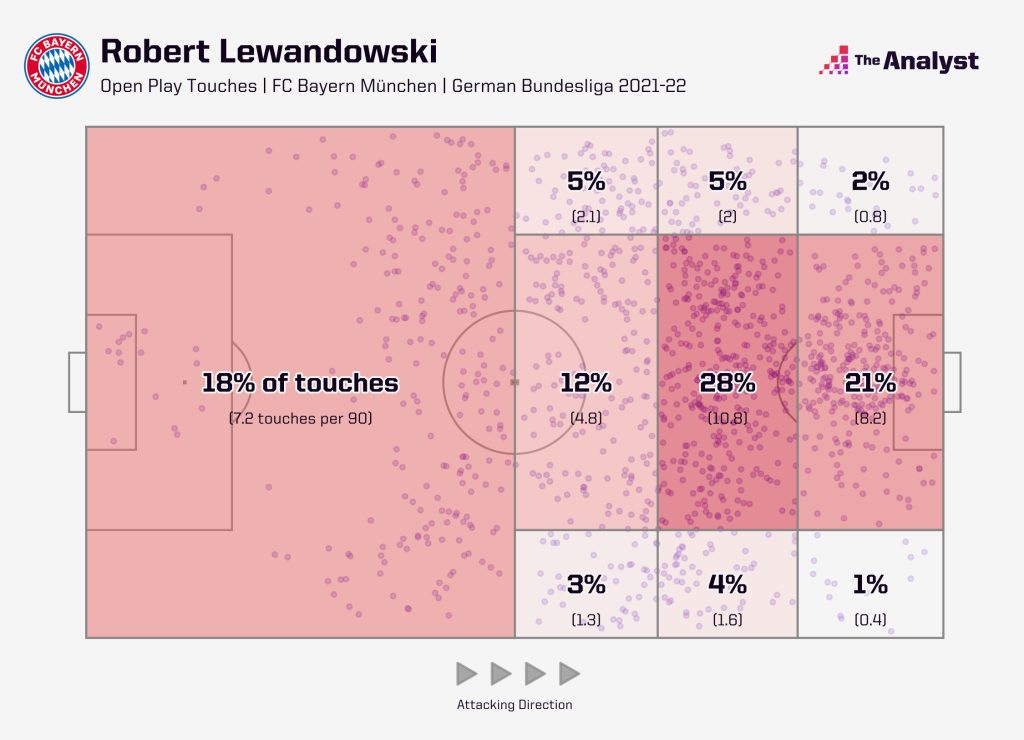
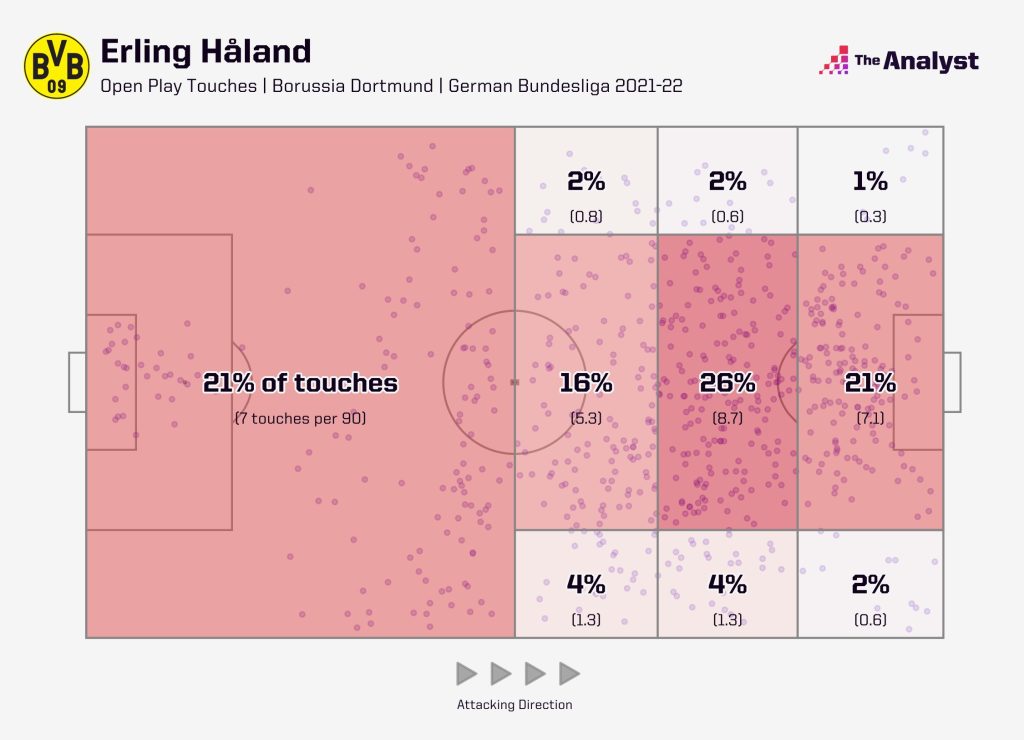
He is a true facilitator. His size and technical ability combined see him hold the ball up excellently, holding off defenders and intelligently holding the ball, beating opponents by pausing for just a second, and waiting for a challenge before shifting the ball in the opposite direction. When there are more team-mates around him, the 24-year-old mixes things up, either pausing to wait for a runner or playing the ball first time.
He does the former as he drops into midfield to offer a one-two …
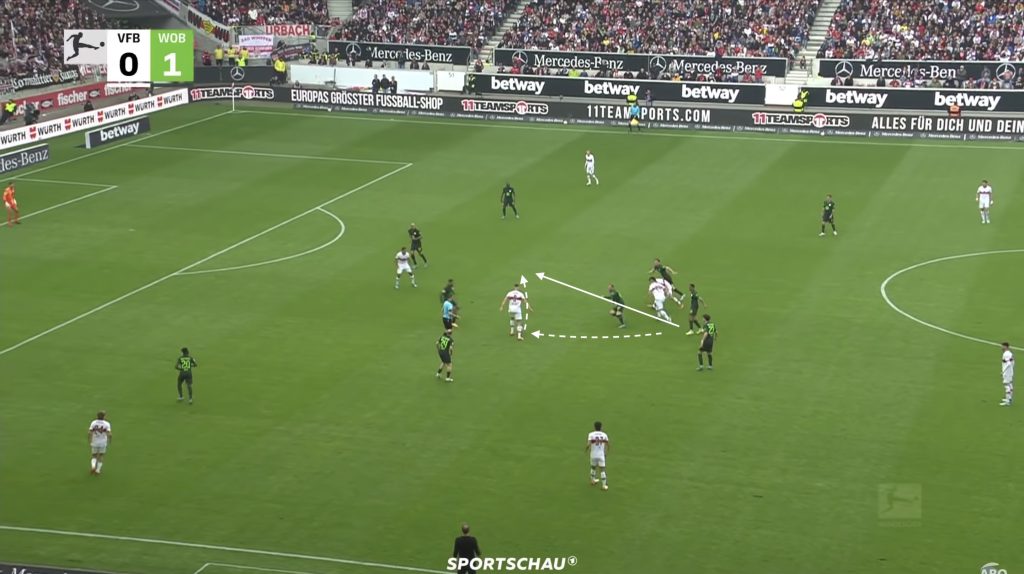
… just as effectively as he does it inside the area …
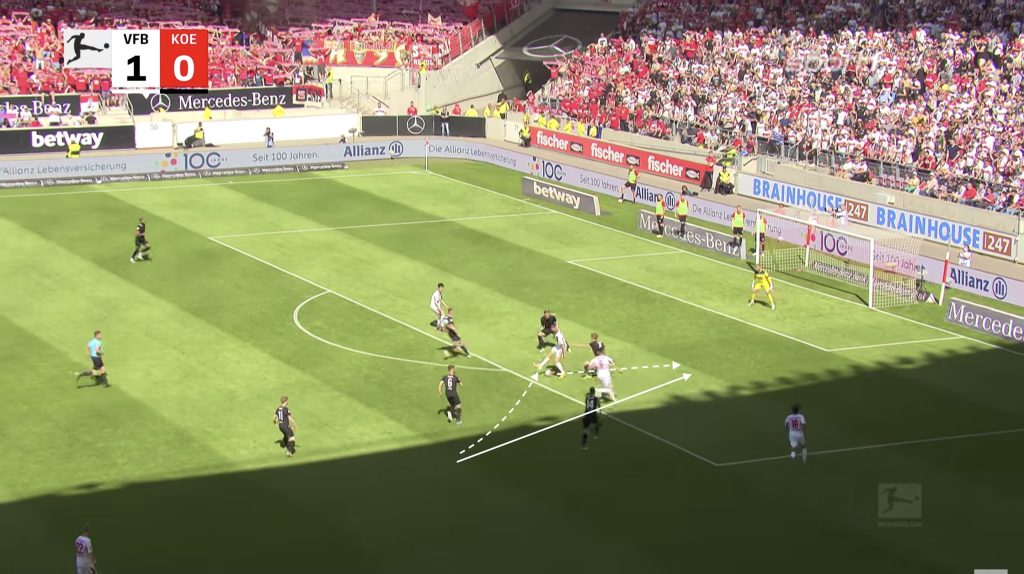
When it comes to playing on the break, he will consistently use just one touch to release team-mates into space, as Bayern found out over and over again when the sides met recently.
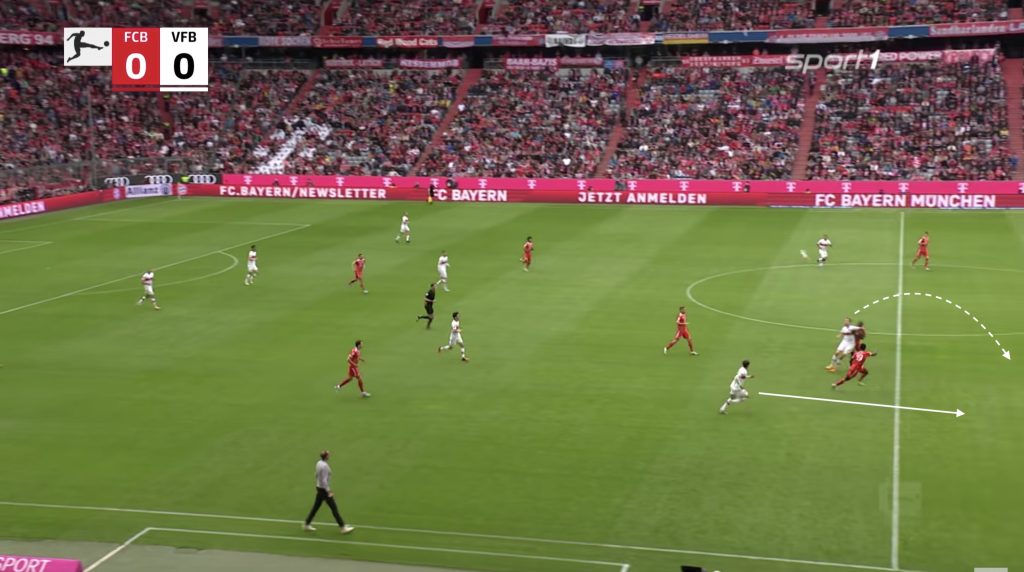
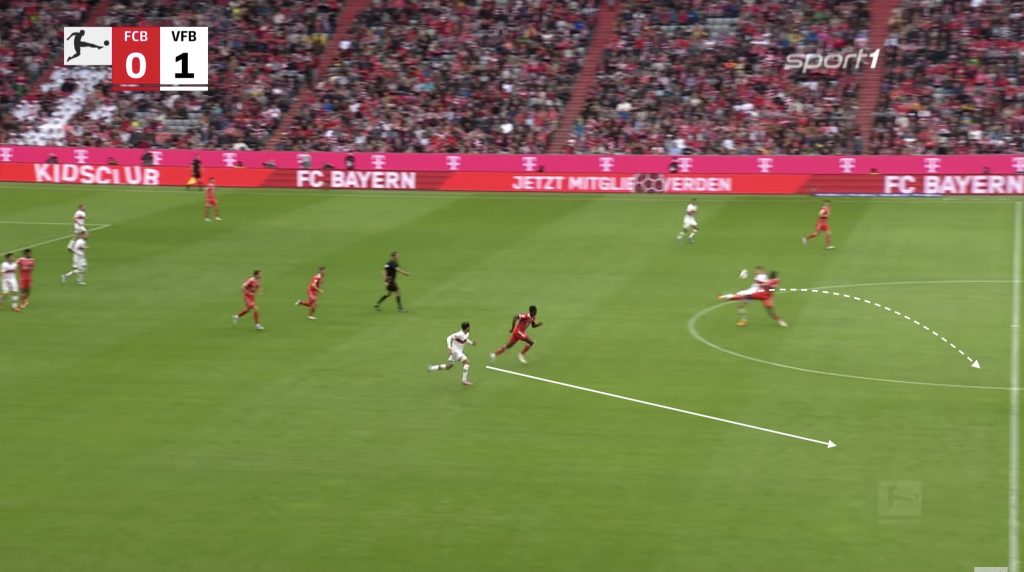
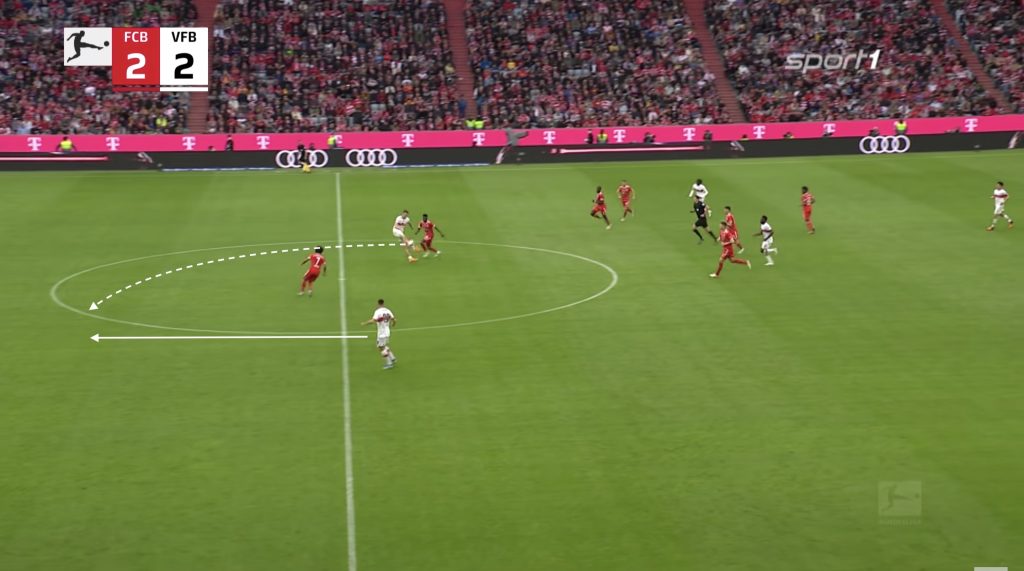
It is that awareness of where his team-mates are and looking to release them quickly that makes him an interesting prospect for bigger sides, especially with the number of chances he creates with limited touches and quick lay-offs in the penalty area.
So many of the efforts laid on by the nominal big man are just short passes right in front of goal, teeing up someone in a better position as he attracts defenders.
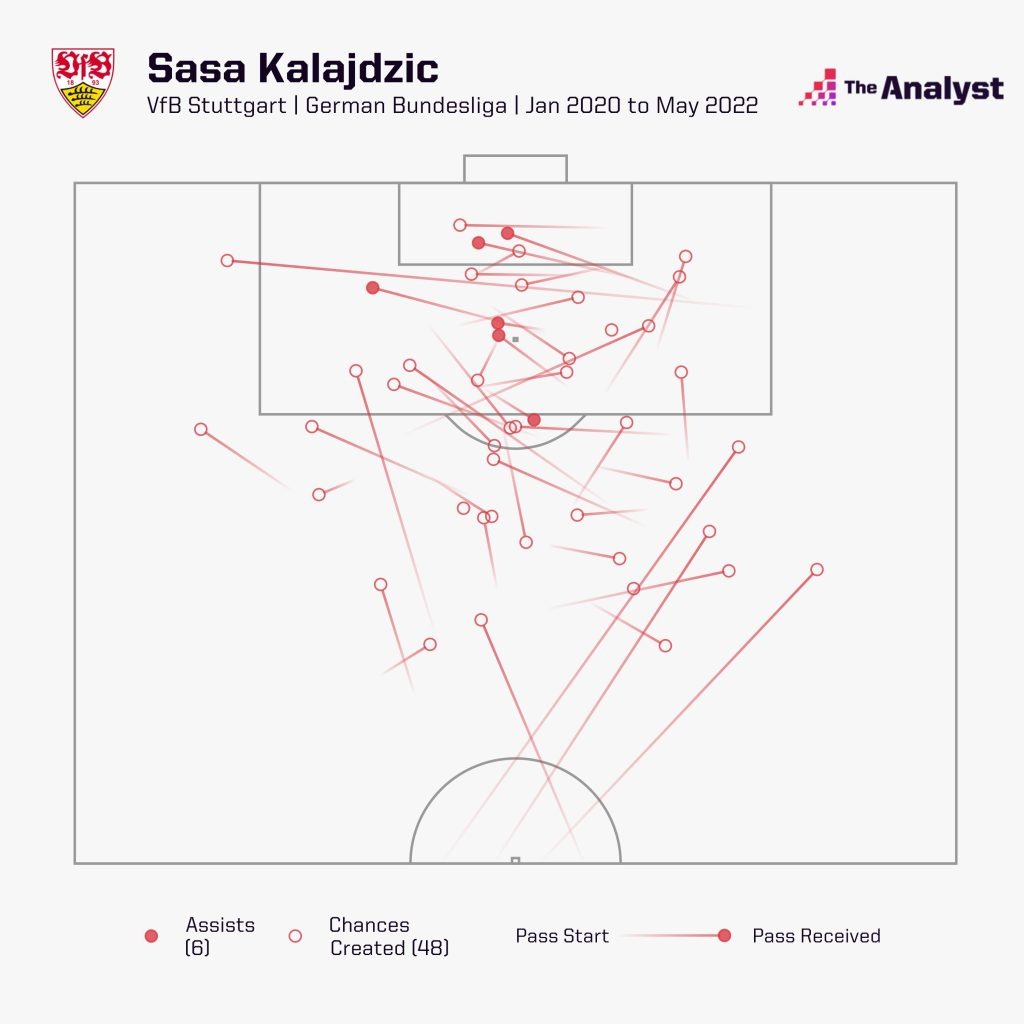
At Bayern that sort of play would see the likes of Leroy Sané, Jamal Musiala and Serge Gnabry, as well as Leon Goretzka from deeper, find themselves in positions to finish moves off more regularly.
Bayern have also been linked with Sadio Mané and pairing him with Kalajdžić would look a lot like the way Julian Nagelsmann has paired quicker wide forwards like Serge Gnabry, Andrej Kramarić and Timo Werner with more physical target men like Sandro Wagner, Joelinton and Yussuf Poulsen at his previous clubs.
Likewise at Dortmund, Kalajdžić could help ease Karim Adeyemi’s transition to the league after his move from Salzburg or help squeeze more goals out of last season’s summer signing Donyell Malen and youngster Youssoufa Moukoko as well as Marco Reus, Giovanni Reyna, Julian Brandt and Jude Bellingham.
And that’s the point to the links: neither club will target Kalajdžić expecting him to score 30 or 40 goals in a season, but to grease the wheels of a new-look attack. Both Bayern and Dortmund have had their attacks built around servicing one elite centre-forward in recent seasons. It has been effective but replacing it is not simply a case of taking one player out and plugging in someone of equal quality, it will need multiple players to share the load and Kalajdžić is someone who can help them do that while also carrying some of it himself.
Graphic design by Briggs Clinard.
Enjoy this? Subscribe to our mailing list to receive exclusive weekly content.
